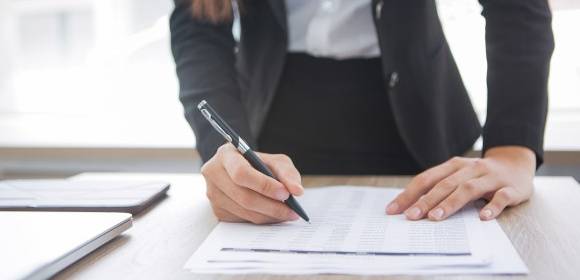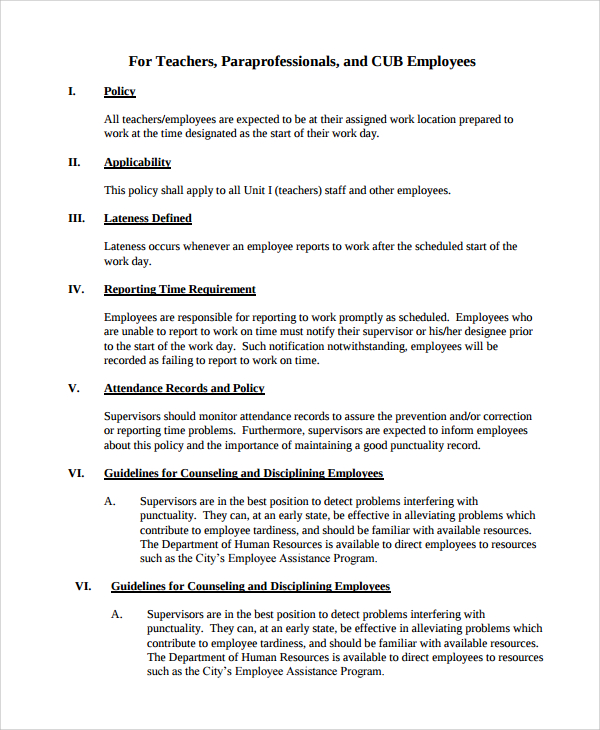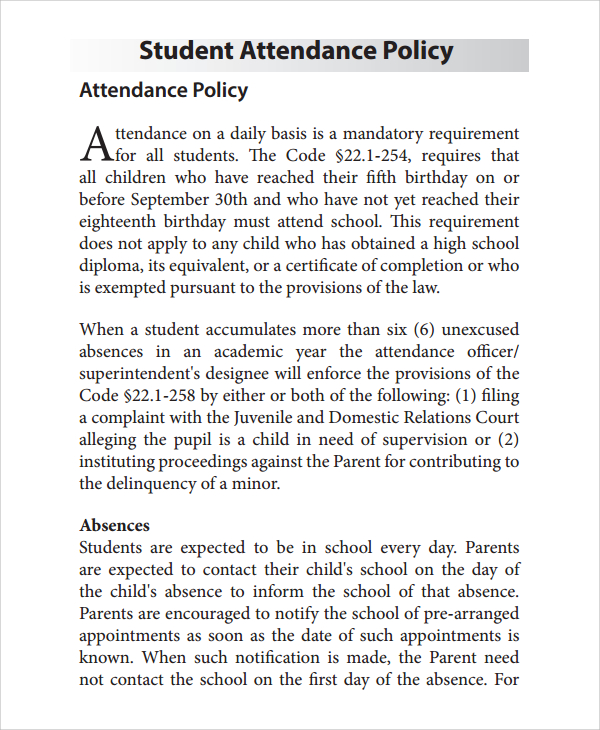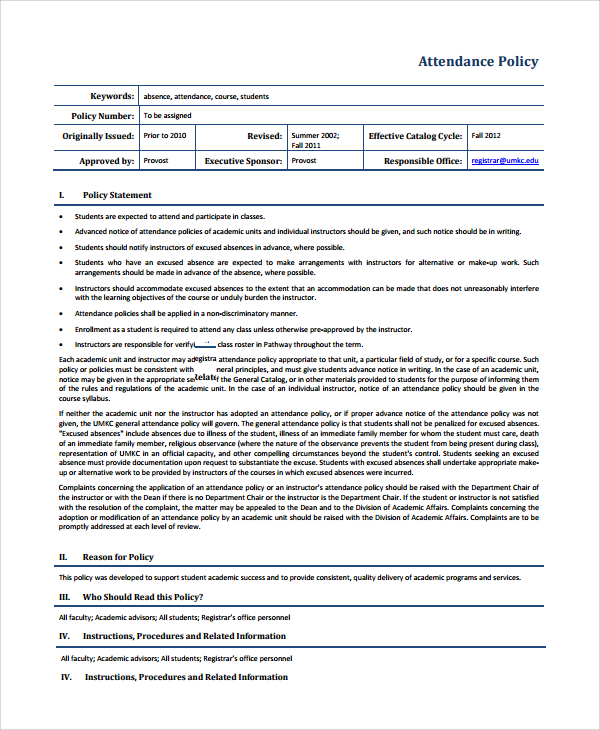The attendance policy template contains both attendance policies and also the full record of attendance with lots of guides on how to use these records for gauging employee or student attendance, performance, net turnover etc. Therefore the templates naturally have a huge role to play, and you must start using them now to get exact count of attendance, show policies to your employees or members and get better results from the work you are doing. You can also see IT Security Policy Templates
Attendance Policy Template

Employee Attendance Policy Sample
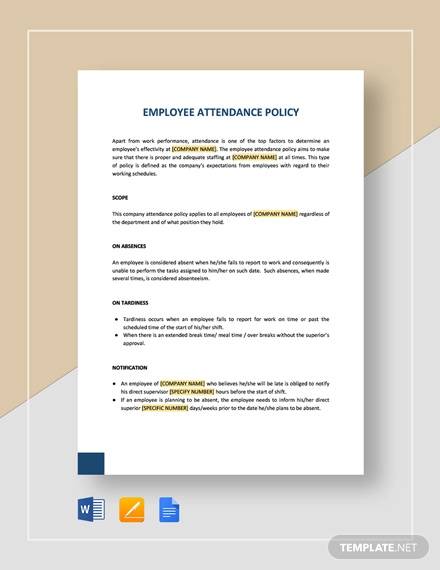
Employee Attendance Policy Template
The employees are recorded for attendance, and it is this policy template that you get here. Using this template you will be able to make a compote calculation of employee attendance, their performance, how the work is getting fulfilled, done or impacted etc. Every business or office needs this to implement discipline.
School Attendance Policy Template
If you have to bring work and order proper disciple etc in the school, then you must use the template for keeping school attendance and the policies must also be discussed with students. This will help you organize things better.
Staff Attendance Policy Template
The staff attendance policy template is alike the employee attendance template, and here you may keep attendance and related policies and calculations for all office staff. These are to be used mainly in offices for staffs of all levels. You may bring in work culture and order in office through this.
Student Attendance Policy Template
Sample Attendance Policy
Developing Attendance Policy
College Student Attendance Policy
Why You Need the Attendance Policy Templates?
The attendance policy templates are highly needed to give you a complete attendance structure in the organization. You may not be able to maintain all that when you do it yourself, and the implementation of policies, attendances, performance based and turnover based calculations etc can be difficult, hence you must get a structure that is professionally made and can do the same for you without you taking the headache of formatting. Making of such structures get really easy with templates, and then bringing work order in organizations is just the next step. You can also see Travel Policy Templates
What is the Importance of Attendance Policy Templates?
The importance of attendance policy templates is that, you can keep the structure for perfect formatting, and get a professionally built attendance policy and calculation sheet. Thus helps you regulate employees or staff etc, and help you implement discipline. The policies can be highlighted well through this, and you may instantly calculate the performance and related profit and loss through the same sheet. Since you don’t spend time on structuring and formatting, and get a free template to do all that in easy steps the whole job gets simplified. You can also see Cancellation Policy Templates
How to Use the Templates?
Using the templates that are free to download is the best job to do, when you are saving every penny to make the office or school etc a better place. You not just get a ready format, but a structure utterly professional to keep your standards high, and this let you create an impression on other members and staffs. You can also see Policy Proposal Templates
The policy and attendance sheet making gets intensely easy when you download the free template and simply use the PDF or Word version to personalize a little and make a smart presentation in minutes. Templates are easy and economic, quick and resourceful and are to bring a work order in your office. You can also see Document Retention Policy Templates
As you start making the office a better place to work, you must make it important that attendance and policies are rightly implemented on time. Right from the beginning of office starting if you keep an eye on these things, then you will be able to keep things in order from the beginning. And the usage of training policy template in making these sheets actually keeps the whole project economical and yet highly professional.
If you have any DMCA issues on this post, please contact us!
Related Posts
Retirement Speech Samples & Templates
Weekly Schedule Samples & Templates
Contractual Agreement Samples & Templates
FREE 9+ Amazing Sample Church Bulletin Templates in PSD | PDF
Sample Business Card Templates
Sample Cashier Job Descriptions
Questionnaire Samples
FREE 10+ Sample HR Resource Templates in PDF
FREE 10+ HR Consulting Business Plan Samples in MS Word | Google Docs | Pages | PDF
FREE 49+ Sample Job Descriptions in PDF | MS Word
FREE 16+ Nonprofit Budget Samples in PDF | MS Word | Excel | Google Docs | Google Sheets | Numbers | Pages
FREE 13+ Academic Calendar Templates in Google Docs | MS Word | Pages | PDF
FREE 10+ How to Create an Executive Summary Samples in Google Docs | MS Word | Pages | PDF
FREE 23+ Sample Event Calendar Templates in PDF | MS Word | Google Docs | Apple Pages
Company Profile Samples
